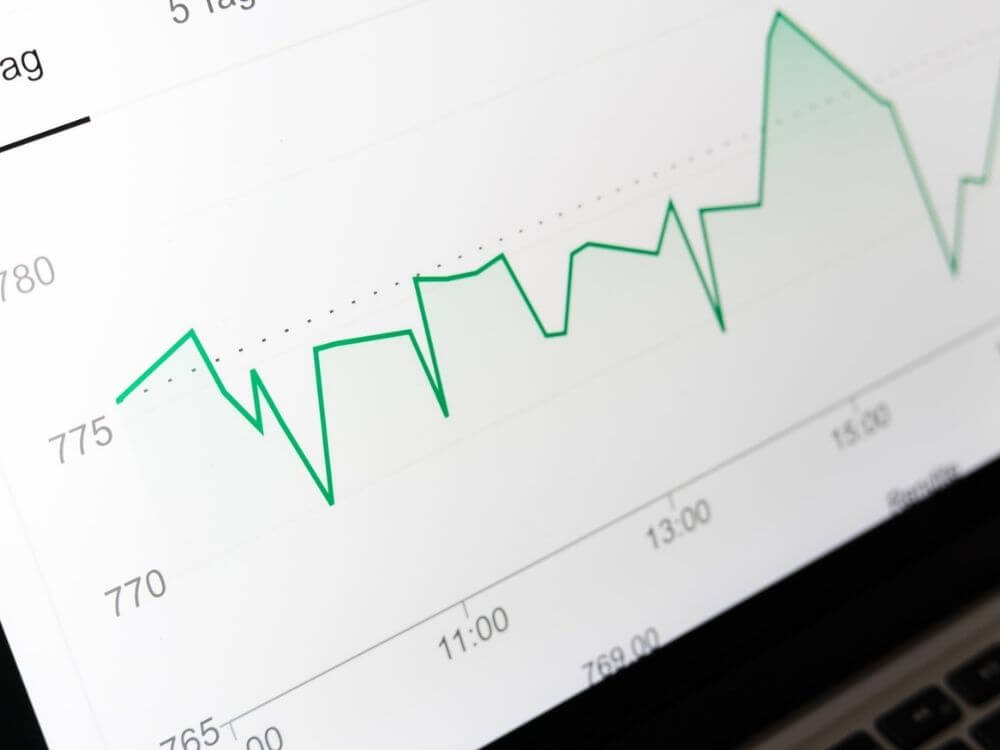When it comes to a winning sales strategy in the B2B space, planning is king. Without a plan in place that sets out your sales goals, you’ll never really know if you’re business is heading in the right direction.
One of the most basic plans you can put into place to improve your lead generation, in particular, is a sales cadence.
This simple yet effective tool gives structure to your outreach and ensures each lead is receiving the same high level of communication from your sales reps.
But in reality, most sales teams don’t follow a sales cadence, and this leads to significant inconsistency between leads.
In this post, we’ll show you the importance of having a sales cadence and how to build one that helps convert more cold leads into paying customers.
There are four key factors that consistently affect B2B buyer behavior – do you know what they are? See if you got them all right here.
What is a sales cadence?
Your sales cadence is the series of touchpoints a potential customer will go through in the buying process before becoming a paying customer.
This usually begins in the awareness phase when they find you through a Google search, paid ad, or social media post. And will continue all the way through until a sales call or meeting where your sales reps close the deal.
If a prospect goes through your entire sales cadence and doesn’t make a purchase, they’ll recycle back into a nurturing sequence until they’re ready to buy.
When it comes to B2B lead generation, your sales cadence will focus on the sales team’s efforts to secure new leads based on calls, sales emails, meetings, etc.
In 2021, it takes around six to eight touchpoints in a sales cadence before a lead is ready to buy. So it’s vital to have a structured, effective sales cadence that funnels prospects through your different marketing stages.
Sales cadence examples
The better structured your outreach campaigns, the more likely you are to secure a new lead during the sales cycle. Let’s take a look at a perfect sales cadence as an example of effective lead generation.
Day 1: Initial cold email
When you find a good potential lead, you’ll begin with cold outreach – usually in the form of an email, but your ideal clients might prefer calls.
This first point of contact needs to be highly personalized, concise, and convey real value for the prospect.
You should do your homework beforehand so you can personalize the email with more than just a name – find out:
- The company they work for and their position
- Any recent articles or podcasts they’ve published
- The competitors they use (so you can show them how your offer is better)
- Any mutual connections or referrals you can mention
Day 3: A follow-up email
Most prospects are busy people who don’t have time to reply to every cold email they receive – they might not even get your first email.
So it’s important to follow up a couple of days later to check in, see if they received your initial email, and show them the value you offer.
In this email, you might include a quick example of a previous similar client and the results you got for them.
Keep it short and sweet and encourage them to follow up with you.
Day 6: Make a phone call

If you’ve been emailing up until now and haven’t got a reply, follow up with a phone call. Research shows that later in the afternoon will give you the best chance of getting through, but you can always leave a voicemail if you don’t get a response.
Your prospect might have a full inbox and be too busy to check through cold emails. Or you might be dealing with a buying center that’s more difficult to contact.
That doesn’t mean they wouldn’t benefit from your offer and still end up making a buying decision.
Plus, many business people just prefer phone calls to emails.
If you do need to leave a voicemail, keep it short and highlight the benefit of the offer you’re giving:
“Hi [prospect’s name], this is Jamie from Bant.
I sent an email a couple days ago about how I think we can help you significantly increase the number of monthly leads you get with our automation tools.
If you want to take a look at a free demo, I’d love to send it over.
You can reach me at [your number or email].”
Day 10: A final follow-up email
If you’re still getting no reply, it’s time to cut your losses. In your final follow-up email, ask if they’ve got your voicemail and just reiterate the reason you want to set up a call.
Keep the focus on the prospect and what they will gain, and drop in a case study, portfolio, or success story to give some final social proof.
Day 16: A LinkedIn message
A good outbound sales cadence will use varied methods of contact. This stops the prospect from feeling bombarded by emails, and it gives you a better chance of reaching them.
Most B2B business owners are active on LinkedIn, so drop them a message on the platform showing the benefits of your offer and giving some free value.
Day 20: The break-up email
After zero communication, you might want to send a break-up email. This is just to let your prospect know you haven’t heard back and you get the message.
End this email on a positive note though and leave the door open to future communication. You never know, you might get a reply letting you know they’ve only just seen your emails.
Reiterate your offer one final time (in the form of value and benefit to your prospect), and let them know how to reach out if they’re ever in need of your services.
Advantages of a Sales Cadence
If you haven’t already implemented a sales cadence, here are the key advantages.
Automate the process
Having a sales cadence to follow gives structure to your sales process and allows you to automate much of the outreach process. This means your sales reps can spend more time talking to warm leads, rather than chasing cold prospects.
With Bant, you can automate your sales cadence with our data-driven experiments and high-converting outreach campaigns. Once set up, we’ll help you acquire new leads on autopilot, making the job of your sales team much more streamlined.
Easily test and improve your sales strategies
When each member of your sales team is following the same follow-up sequence for all prospects, it’s much easier to spot what’s working and what’s not.
When everyone has their own system that changes for each client, it’s hard to make any improvements to boost your conversion rate.
Improve conversion rates
When you’ve defined how many times your team should follow up with inbound leads and how, you can boost conversions.
Sales reps may only follow up once or twice without a structure in place, however, we’ve already seen they need to be doing so six to eight times for the best results.
Having that defined structure also means sales reps will feel less intrusive since they have a plan to follow through with. This will give them more confidence when reaching out to prospects which goes a long way in securing a meeting.
The Elements Of a Good Cadence

There are several key factors you need to plan out when creating a sales cadence for your business.
Step count
All businesses are different. For smaller investments, fewer steps are needed, however, for larger investments, you’ll usually need more.
Most B2B businesses need between five and twelve, so figure out your own step count so you can plan each touchpoint from there.
Touchpoint types
Next, think about the type of touchpoints you’ll include. Some prospects prefer to be contacted by email, some prefer phone calls, others spend a lot of time on social media platforms.
If you have an ideal buyer persona, you should have an understanding of how to communicate with your ideal customers.
But you should aim for a variation in your social touches. Most B2Bs will include emails, phone calls, and LinkedIn messages.
Timing
The timing between your touchpoints is also important. If your cadence is too quick, it will feel like spam. Too slow, and your prospect is going to forget who you are.
If you begin with a phone call, add a follow-up email on the same day – this will help ensure your prospect gets the message.
After that, it depends on your business and offer. Begin by spacing each step a few days apart and you can then tweak and test as you see results.
How to Build Sales Cadence
When you create a sales cadence, it’s not a one-and-done process. It’s an evolving tool that you’ll need to update, tweak, and test to improve conversions.
Understand your target audience
Start with a clear understanding of your ideal buyer. How do they like to be contacted? What are their pain points? What type of content do they resonate with?
The more you know about your target audience, the easier it is to build a cadence that they respond to quickly.
Draft your outline
Start with a basic outline that shows the number of touchpoints, contact type, and the number of days between each point. Here’s an example:
- Day 1: initial cold email
- Day 3: Follow up email
- Day 8: Phone call and voicemail if needed
- Day 8: Follow up email after phone call
- Day 16: Linkedin message
- Day 20: Final follow up email
- Day 22: Final call
Create templates
For each touchpoint, create a template that shows what each point of contact needs to include. You might want to give your prospects:
- The benefits of your service
- Case studies or success stories
- A portfolio
- A free demo
- An exclusive offer or discount
Each touchpoint should be personalized, valuable, and full of quality content. Make each touchpoint concise by adding in just one major theme – you don’t want to overwhelm prospects with too much information at once.
How to Measure Sales Cadence Results

It can be tough to measure the success rate of a sales cadence with the number of variables involved. But there are some metrics you can track to see results:
Email open and click rate
Email open rates are important for cold outreach, but if they’re not taking any action after opening the email, something isn’t working.
If you’ve added a link to your calendar or demo that you want prospects to click on, you should be tracking both open rates and click rates to measure the effectiveness of the email.
If you’re not getting opens, working on the subject line will help.
If you’re not getting clicks, the content within the email needs work.
Email open to reply ratio
If you don’t have links in the email, you’ll want to track the response rate. Most initial outreach emails will encourage the prospect to reply to set a meeting or answer follow-up questions. A good reply rate shows your cadence is effective and your email content is engaging enough.
Call to appointments ratio
Another key metric is the call to appointments ratio. Initial sales calls will usually have a goal of setting a meeting with a prospect. Keep track of how many meetings you get from the number of calls you make to ensure your call strategy is effective.
Conclusion
Setting up a structured sales cadence is a must to help your sales reps book more meetings and improve their conversion rates. It’s a simple tool that gives structure to your sales process and allows you to track progress much more easily.
But even with a great sales cadence, you’ll still have countless leads that just aren’t ready to buy from you yet. And that’s where lead nurturing comes in.
For ideal leads that aren’t quite ready to make a purchase, you need a nurturing sequence to keep your brand top of mind. Read our guide on lead nurturing to add this to your sales process.

